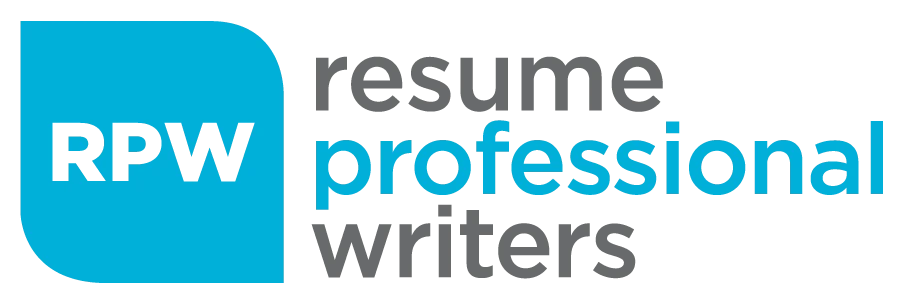Balancing honesty and professionalism is the ultimate struggle most professionals face when answering interview questions about personal weaknesses. They tend to provide overly rehearsed or vague weaknesses examples that fail to impress hiring managers, once the fear of appearing incompetent or underqualified overshadows them—a moment that serves as a pivotal indicator for employers to determine whether a candidate is a self-aware and growth-oriented professional, or unprepared for self-reflection.
This guide helps candidates across industries identify acceptable weaknesses and turn them into strengths through strategic communication. Designed for all experience levels, it offers practical, well-phrased weaknesses examples suitable for professional interviews, helping candidates articulate self-awareness with credibility and confidence.

Why Interviewers Ask About Weaknesses?
When employers ask about weaknesses examples, they are not looking for excuses or self-criticism. They seek evidence of self-awareness, emotional intelligence, accountability, and resilience—traits that suggest the applicant can handle development opportunities constructively.
Hiring managers value individuals capable of assessing their limitations while demonstrating initiative to overcome them. This exchange reveals a candidate’s mindset toward learning and adaptability in challenging work situations.
A survey by the National Association of Colleges and Employers (NACE) list self-awareness among the top behavioral competencies employers assess during interviews. Professionals who can articulate weaknesses confidently often leave a stronger impression than those who rely solely on listing strengths.
The key lies in showcasing a growth strategy—turning an area for improvement into a lesson or a measurable result of progress. This approach aligns with modern performance management frameworks that emphasize continuous learning over perfection. For example, if a candidate mentions struggling with delegation, they can emphasize how they developed systems to assign tasks more effectively, resulting in improved team outcomes.
This balanced response reassures the interviewer that the weakness is neither ignored nor career-limiting. Instead, it demonstrates accountability, maturity, and a willingness to evolve—qualities that define long-term potential and leadership readiness.
How to Talk About Weaknesses Effectively
Job seekers should follow a structured approach when discussing weaknesses to prevent their responses from appearing defensive or rehearsed. A clear, honest explanation followed by a proactive improvement plan demonstrates integrity and competence. Structuring the answer using the reflection-action-impact framework keeps it professional and focused on growth. This model includes identifying the weakness, outlining the steps taken to address it, and describing the positive outcomes achieved as a result.
- Reflection: Acknowledge the weakness directly, avoiding clichés like “being a perfectionist.”
- Action: Describe realistic corrective measures such as training, mentoring, or workflow adjustments.
- Impact: Conclude with the benefits gained—improved efficiency, stronger teamwork, or enhanced project outcomes.
This structure helps interviewers see initiative and accountability in one cohesive narrative. Candidates should avoid weaknesses that undermine essential job requirements. For instance, a registered nurse should not claim weakness in patient interaction, just as a financial analyst should not highlight difficulty working with numbers. Instead, job seekers can use transferable or context-specific weaknesses they have already addressed through development.
Additionally, being concise and authentic enhances credibility. Interviewers quickly recognize exaggerated or generic answers. Using contextual examples, such as feedback from supervisors or performance goals, makes the response measurable and realistic. Demonstrating a growth pattern assures employers that the candidate’s professional development contributes positively to the workplace environment.

15 Professional Weaknesses Examples and How to Address Them
The following examples illustrate common weaknesses suitable for various industries, along with explanations for framing them constructively. These samples align with behavioral interview standards and demonstrate self-improvement rather than self-criticism.
1. Public Speaking Anxiety
Many professionals find presenting to large audiences intimidating. Admitting this as an early challenge and explaining how you improved through workshops and gradual exposure shows both self-awareness and a proactive mindset.
2. Delegation Hesitancy
Early-career managers often prefer handling tasks themselves to ensure quality. Describing how you learned to delegate effectively by mentoring teams and setting clear goals demonstrates growth in trust and accountability.
3. Overcommitment
Taking on too many responsibilities can lead to stress and burnout. Sharing how you learned to manage time and prioritize tasks effectively highlights discipline and a mature approach to workload balance.
4. Difficulty Saying No
Accepting every task may seem helpful but can hinder focus and performance. Explaining how you learned to set healthy boundaries and improved project outcomes shows emotional intelligence and professionalism.
5. Perfectionism
Perfectionism can sometimes delay progress or collaboration. Discussing how you’ve learned to set realistic expectations and balance quality with efficiency showcases growth and improved teamwork.
6. Technical Upskilling
Admitting limited experience with certain tools or software is valuable when followed by action. Detailing how you completed certifications or training programs emphasizes adaptability and commitment to continuous learning.
7. Conflict Avoidance
Avoiding difficult conversations is a common workplace challenge. Explaining how structured feedback sessions helped you communicate more effectively demonstrates maturity and problem-solving ability.
8. Impatience with Delays
Working in fast-paced environments can make waiting difficult. Showing how you’ve learned to respect diverse work styles and manage expectations reflects empathy and strong emotional intelligence.
9. Resistance to Delegation in Creative Roles
Creative professionals often struggle to trust others with conceptual work. Sharing how collaboration and open idea exchange improved outcomes highlights leadership growth and team-oriented thinking.
10. Limited Cross-Functional Exposure
Having limited interaction with other departments can restrict perspective. Discussing how cross-functional projects expanded your understanding shows initiative and openness to growth.
11. Data Presentation Skills
Turning complex data into clear visuals can be challenging. Describing how you enhanced this skill through analytics visualization training demonstrates initiative and communication strength.
12. Work-Life Imbalance
An intense focus on productivity can impact personal well-being. Explaining how you established work boundaries that improved both wellness and performance creates a relatable and balanced narrative.
13. Detail Overload
Paying too much attention to details can slow progress. Showing how you adopted structured review processes or delegated subtasks to improve efficiency underscores adaptability and leadership.
14. Adaptation to Organizational Change
Adjusting to shifting priorities can initially feel uncomfortable. Highlighting how you embraced agile methods and flexibility underscores resilience and a growth mindset.
15. Limited Networking Confidence
Networking doesn’t come naturally to everyone. Sharing how you joined professional associations or attended industry events to build confidence demonstrates initiative and career-driven development.
Each weakness becomes interview-appropriate once candidates demonstrate sustained progress. The goal is to convert vulnerability into value—turning awareness into action that reinforces trust and collaboration within the organization. This strategy transforms what could be a challenging question into an opportunity to demonstrate continuous improvement.
Industry-Specific Weaknesses Examples
While general examples are beneficial, tailoring weaknesses to individual professions enhances authenticity. Candidates across sectors should align their examples with unique competencies expected in their field. Below is a reference table summarizing acceptable weaknesses for key U.S. industries and how candidates can present developmental progress professionally.
| Industry | Acceptable Weakness Example | Constructive Framing |
|---|---|---|
| Healthcare | Tendency to overextend during emergencies | Implemented self-care and team rotation techniques to prevent fatigue while ensuring patient safety |
| Information Technology | Limited skill in new programming language | Enrolled in accelerated online courses to strengthen domain expertise |
| Finance | Over-analysis of details causing slow decision-making | Adopted structured reporting templates for faster insights without compromising accuracy |
| Education | Overreliance on traditional teaching methods | Integrated digital tools and formative assessments to engage diverse learners |
| Engineering | Reluctance to solicit feedback early in projects | Now incorporates peer-review checkpoints for continuous improvement |
| Marketing | Challenged with data storytelling | Leveraged analytics dashboards to improve presentation of ROI metrics |
| Administration | Difficulty delegating clerical tasks effectively | Adopted productivity platforms and workflow automation |
These examples reflect genuine developmental areas commonly observed in industry professionals. When addressed proactively, they emphasize accountability and drive. Modern hiring practices value evidence-based reflection—meaning job seekers who showcase measurable improvement demonstrate strategic self-management rather than simply reciting weaknesses examples.
Turning Weaknesses into Development Goals
Identifying a weakness serves little purpose without a corresponding growth plan. Organizations favor candidates who turn challenges into learning objectives that complement company goals. Setting measurable improvement strategies within realistic timeframes demonstrates goal orientation—an indicator of professional maturity. Many hiring managers use such indicators to gauge promotion potential and leadership capacity.
- Transforming “public speaking anxiety” into “confidence-building through monthly presentations.”
- Reframing “time management” as “implementing productivity systems that align with project benchmarks.”
- Adapting “limited data literacy” into “completing data visualization certification to improve efficiency.”
- Converting “overcommitment” into “developed prioritization framework using agile principles.”
Setting up these goals also benefits post-interview performance. Employers often remember tangible developmental strategies more than rehearsed replies. The use of SMART goal methodology—Specific, Measurable, Achievable, Relevant, and Time-bound—aligns with current talent management frameworks used by corporations across the United States. It helps illustrate professional consistency and readiness for structured evaluation systems.
Additionally, candidates who describe learning processes rather than outcomes alone demonstrate integrity. Sharing gradual improvement—like improving documentation accuracy through training—appears more credible than sudden mastery claims. A transparent learning narrative fosters trust and resonates with organizations emphasizing corporate accountability and long-term career growth.

Common Mistakes to Avoid in Presenting Weaknesses
When discussing weaknesses examples, several pitfalls can undermine credibility. Applicants occasionally choose weaknesses that either contradict job requirements or appear insincere. Interviewers appreciate genuine reflection over generic answers like perfectionism without context or fake humility. Avoiding these errors ensures authenticity while supporting a strong candidate brand.
- Avoid exaggeration: Overstating weaknesses can raise doubts. Keep examples proportionate to the role’s scope.
- Stay relevant: Choose developmental areas that do not compromise critical competencies of the position.
- Do not joke: Using humor or sarcasm to deflect undermines professionalism.
- Support with evidence: Provide examples of training, mentorship, or process adjustments that show self-improvement.
- Stay concise: Overexplaining may seem defensive; succinct and confident language reinforces maturity.
Practicing these principles helps applicants maintain composure during behavioral interviews. Rehearsing answers using mock interview scenarios or career coaching sessions builds confidence and clarity. Employers see prepared candidates as organized and emotionally intelligent—a combination essential for leadership roles and long-term job success.
Build Confidence Through Practice and Feedback
The ability to address weaknesses effectively develops through consistent self-evaluation and constructive feedback. Many professionals refine their responses by seeking mentorship or participating in career coaching sessions that simulate real interviews. This approach bridges self-perception with tangible progress, helping individuals identify patterns in communication, emotional response, and phrasing style.
Recording mock interviews or reviewing post-interview reflections further sharpens message delivery. The 2025 LinkedIn Talent Solutions report highlights that 61% of talent professionals prioritize accurate skill assessment, and 93% believe AI enhances how they measure candidate quality. These practices foster confident communication, continuous improvement, and alignment between professional narratives, resumes, and online profiles.
Continuous learning creates resilience. By embedding a growth mindset into everyday performance, professionals transform self-improvement into a habit rather than a reaction to criticism. Employers recognize such proactive thinkers as adaptive contributors capable of supporting evolving business needs.
Enhance Professional Growth with the Right Support
Understanding and articulating weaknesses strategically can greatly influence long-term career success. Professionals who transform these areas into structured development plans build a stronger, more credible personal brand. Leveraging industry insight and guided evaluation further strengthens candidate narratives. Many job seekers achieve this advantage through professional resume writing help that ensures every aspect of their job search aligns with employer expectations and modern hiring standards.
Frequently Asked Questions
What is the best way to answer “What are your weaknesses?” in 2025 interviews?
The most effective answer identifies a real but manageable weakness and follows with specific actions taken for improvement. Employers value structured responses that highlight personal accountability, self-awareness, and measurable progress toward professional growth.
Should weaknesses be job-related or personal?
Weaknesses should relate to professional performance rather than personal life, but they can include transferable traits such as communication, organization, or time management. The key is to present them in a manner that demonstrates growth without jeopardizing job qualifications.
How do employers evaluate answers about weaknesses?
Hiring managers assess three components: honesty, ability to self-reflect, and commitment to improvement. They look for growth strategies more than flaw exposure, using behavioral indicators to evaluate emotional intelligence and adaptability.
Can mentioning weaknesses affect hiring chances?
No, not when framed correctly. Candidates who show how they have mitigated their shortcomings often make a stronger impression than those who deny weaknesses altogether. Employers appreciate authentic responses backed by deliberate progress.
How can job seekers identify their weaknesses effectively?
Conducting self-performance reviews, analyzing feedback from previous managers, and evaluating performance metrics provide solid insight. Articulating patterns from these assessments helps structure realistic weaknesses and improvement narratives.








